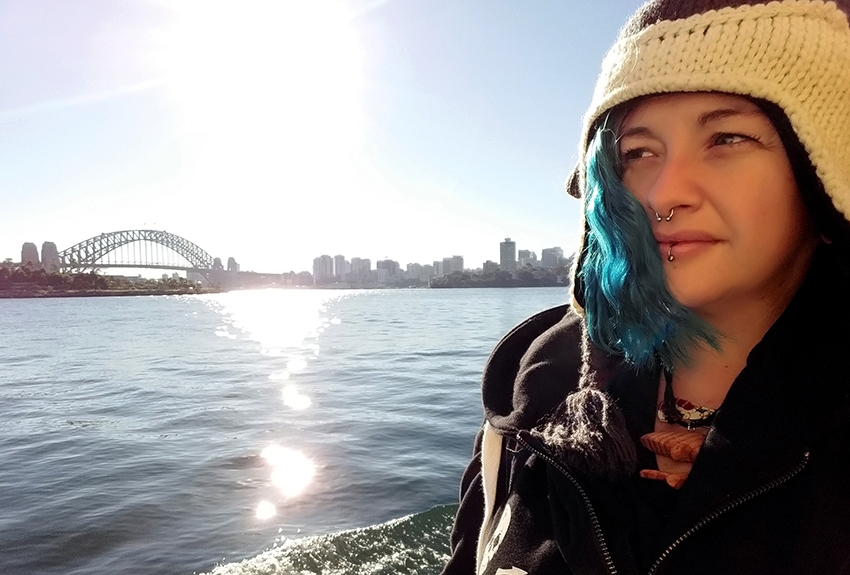I’ve always had a strong sense of identity and am quite strong willed. I wasn’t diagnosed until I was 27, because I was so resistant to seeking help. I eventually found a psychologist because things were falling apart, and she just happened to be a self-harm specialist.
Being diagnosed with borderline personality disorder was really helpful. It was also a relief for my partner at the time. The diagnosis made a lot of sense as I’d never had anyone talk to me about trauma and the effect it can have. I wasn’t open to accepting the trauma. Where I came from, if they didn’t hit you, then it wasn’t abuse. I was so shut off.
Growing up, I was very angry and used to tell people that I didn’t have a problem, it was everyone else that had a problem. Because I was such a forceful and aggressive personality, there weren’t a lot of people who challenged me on that.
Being diagnosed was a helpful thing for me, but it took a long time to seek help.
The psychologist kept calling me until I agreed to come and see her one more time. She put up with a lot of challenging behaviour from me. It took us a long time to build trust, but once it was established, we had a great connection.
Becoming clean and sober has had a lot to do with my mental health recovery too. After I was diagnosed, I was drinking all the time, and took drugs. My behaviour was not healthy. Getting well requires a whole life change. I’ve been clean for three years now.
I don’t have a problem saying that I have mental health issues.
My way of dealing with things is to take the part of you that other people might not understand, and educate yourself about it, bring it close to you. Accept it as part of who you are as a person, explain it and ask people to educate themselves. It’s an illness, one we fight everyday and we can be proud of that.
I’m the kind of person who stands up for what I believe in. I’m the same with my place in the queer community. I want people to understand that we are not any different and we all deserve equal rights, compassion and help with our challenges, whatever they may be. It important to me, however, to also highlight the higher rates of mental distress, trauma, self-harm and suicidality within the LGBTIQA+ community. We need to start addressing it, especially in our young rainbow people.”
I have had to do a lot of therapy to accept my self-harm scars. I would look down at myself and think, ‘No one is going to hire you when you have all these cuts.’ I would always be wearing long sleeves in summer. It took a long time for me to be able to take my cardigan off and be okay with showing my scars. People do notice them and now that’s okay, I invite them to speak to me about it.
Now I advocate for other people to accept themselves and their scars. For some people, I think that there can be something really powerful about seeing self-harm scars on a person who is doing really well in life. It shows where you’ve been and how recovery is possible. I hope what it says is, ‘Look how much I’ve struggled, and I’m still here.’
I make no illusions that everything couldn’t go wrong tomorrow. I was a drug and alcohol counsellor, and the recovery model used in the sector accepts that lapses are inevitable, and are part of the recovery journey. We take steps to make sure that those lapses are managed.
I haven’t self-harmed in years, but that doesn’t mean that I’m cured.
I have a beautiful friend with a mastectomy scar and I have so much respect for her survival. We often talk about how we both have battle scars and are warriors. I want the world to see our scars and realize that we are the same, both strong surviving women who have beaten the odds.
I see scars on other people, and I know how strong they are to have gone through ridiculous levels of suffering and they are still here, still surviving.
If you want to learn more or get help for BPD, check out these national services:

